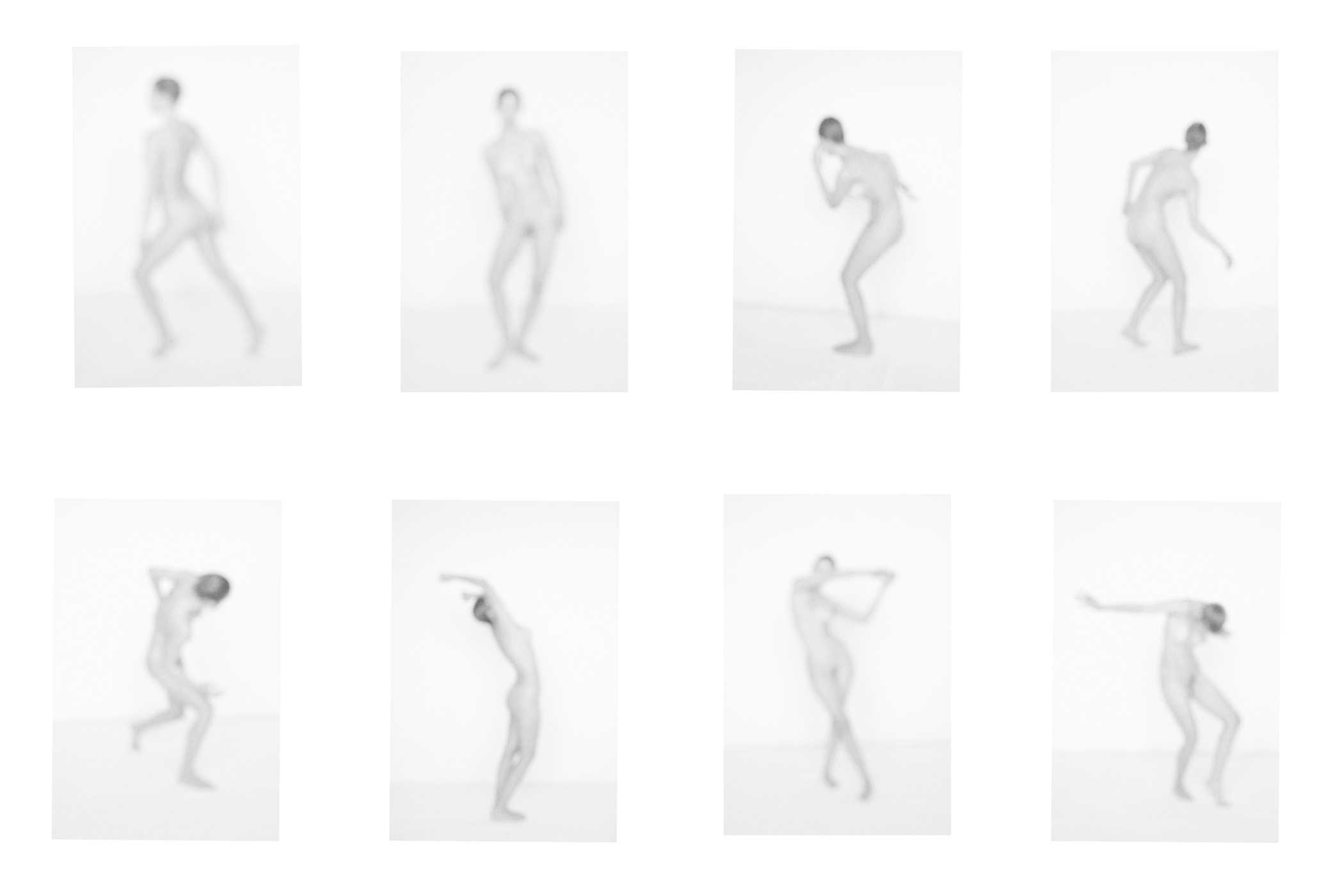
16/16
In Zoltán Tombor's new monumental 2022 photo series Trouvaille, airy, contourless female figures follow one another against an uniform white background in a milky-white fog. Their blurriness continues the world of the portrait gallery of Light Therapy (2021), but here nudes bend and stretch their tendons and muscle tones. The one hundred and twenty separate studio shots are assembled into one huge tableau. Due to the unified vertical format, to the same model and to the uniform, all-softening whiteness it seems like a sequence, like Eadweard J. Muybridge's famous motion studies. But Tombor does not analyse a natural sequence of movements with acamera timer, but sets his nude model among studio conditions. The slim, fragile female figure - in front of a blurry lens - loses its realism of detail, dissolving into an impressionistic haze like the nudes captured by early twentieth-century pictorialist photography. But the white, ethereal figures of Trouvaille do not pose classically, but perform a whole range of different moods and movement phases. One dances gracefully, another stretches her numbed limbs, one holds a yoga pose, another bends to the ground in a casual movement, one poses like a professional ballerina, another like a participant in a totalitarian mass sporting event, one showing off her elegant violin-shaped back like Man Ray's famous surrealist model, the other standing with her bowed leg as awkwardly as Josephine Baker in a banana skirt in a variety show. Trouvaille's permanent model is graceful and chunky, classic yet playful at the same time.
The basic character of Tombor's photography is the exposure and documentation of the thin covering membrane and surface tension (see his exhibition Surface Tension). In his Trouvaille series, he went further: he did not find the shells - sometimes torn - himself but created them with the blurry focus that the camera drew as a semi-transparent curtain in front of reality. We try to get close to it, but it won't let us. No matter how hard we force our eye muscles, the image remains a mystery. Robert Capa, the Hungarian icon of war reportage photography, taught us that if your pictures aren't good enough, you're not close enough. Tombor deliberately steps back to preserve the quiet solitude and mysterious intimacy of odalisques.
Gábor Rieder art historian, curator
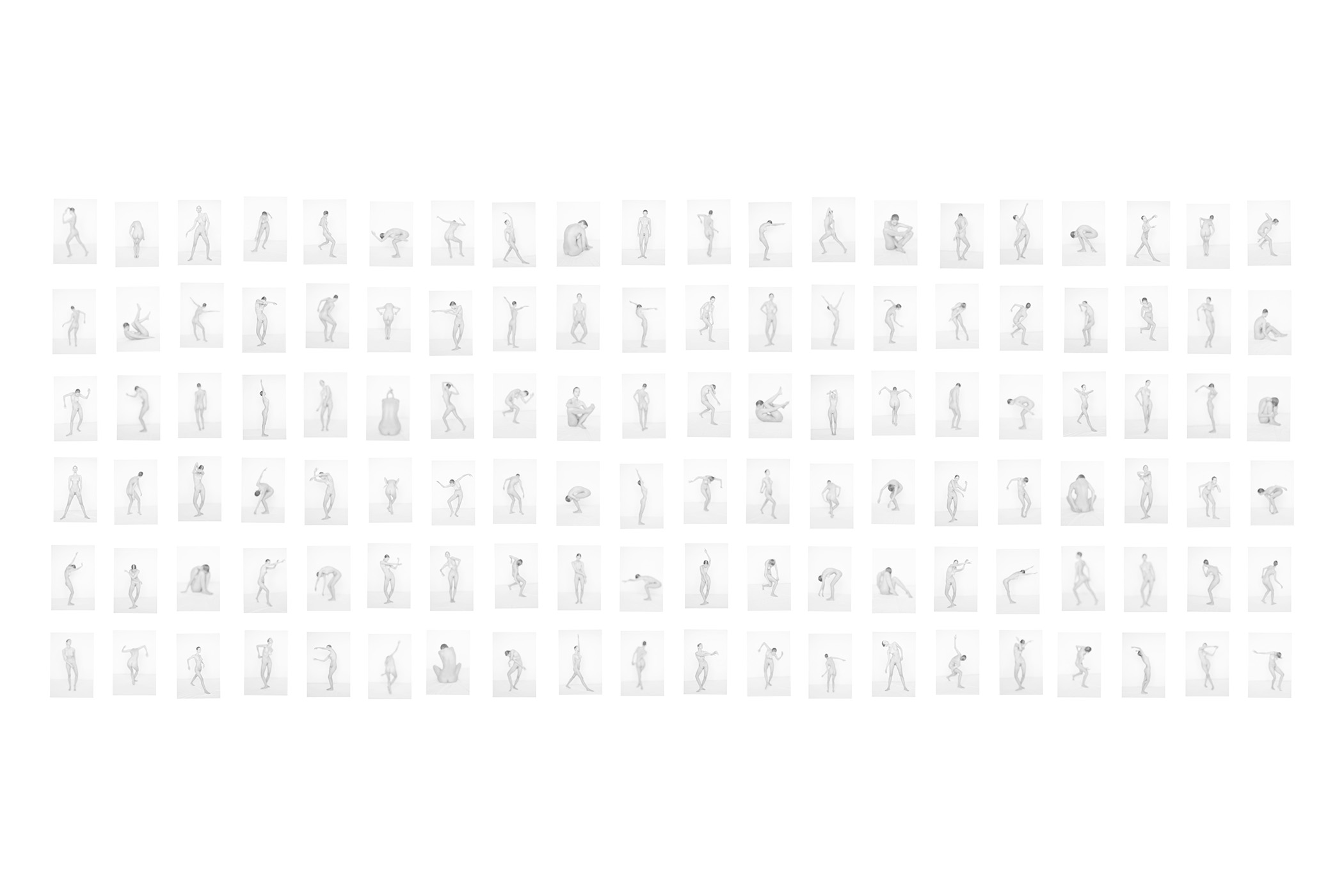
1/16
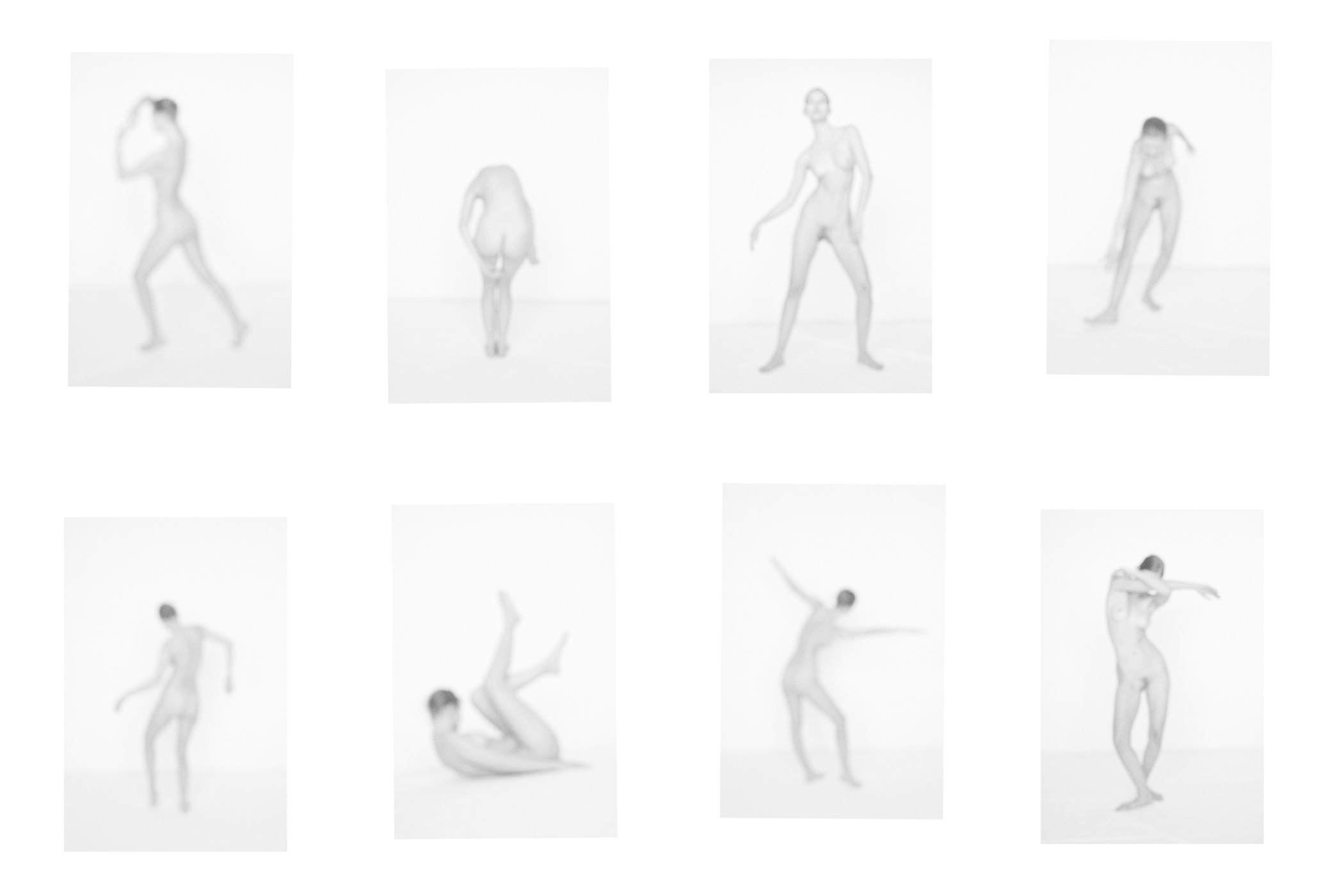
2/16
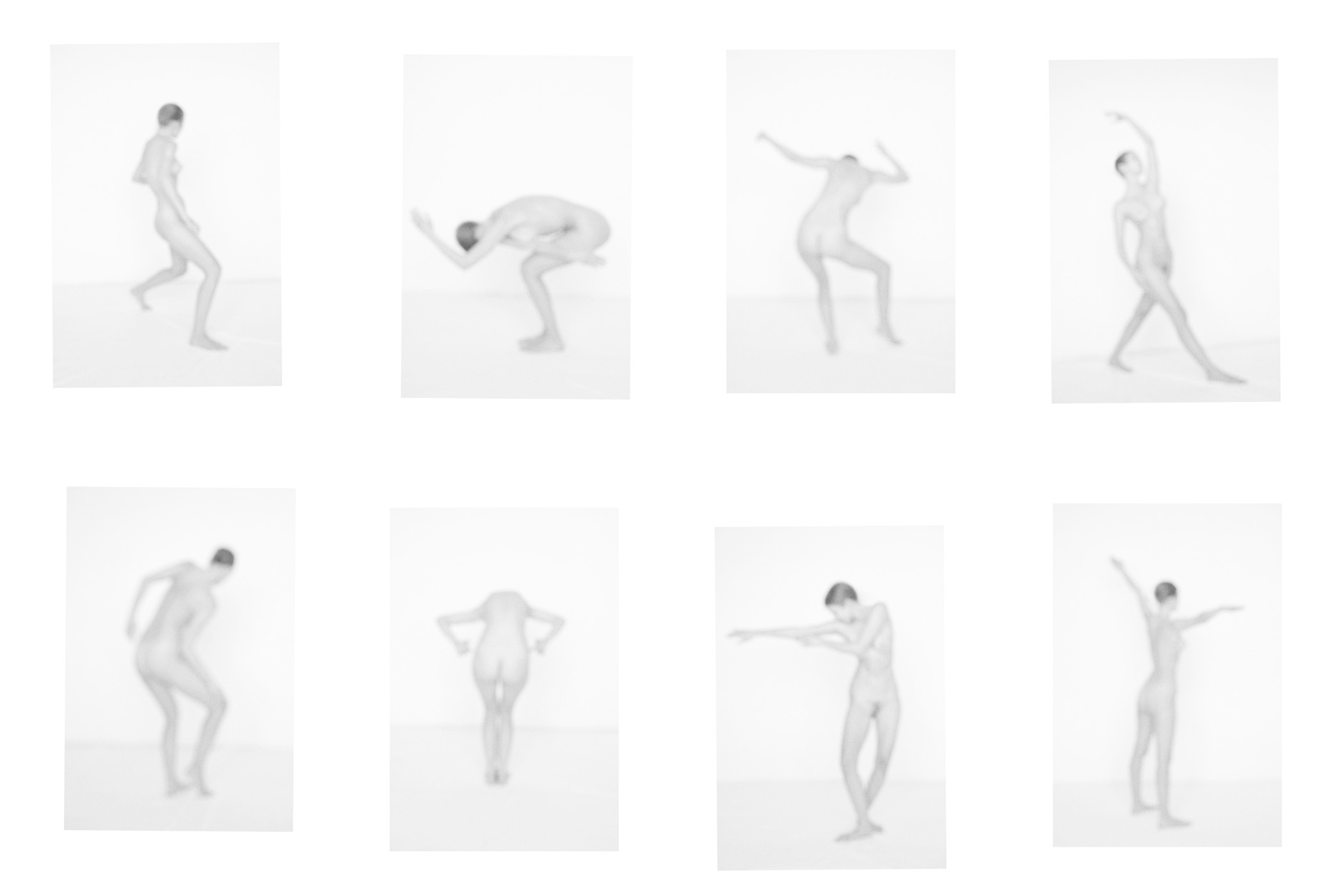
3/16
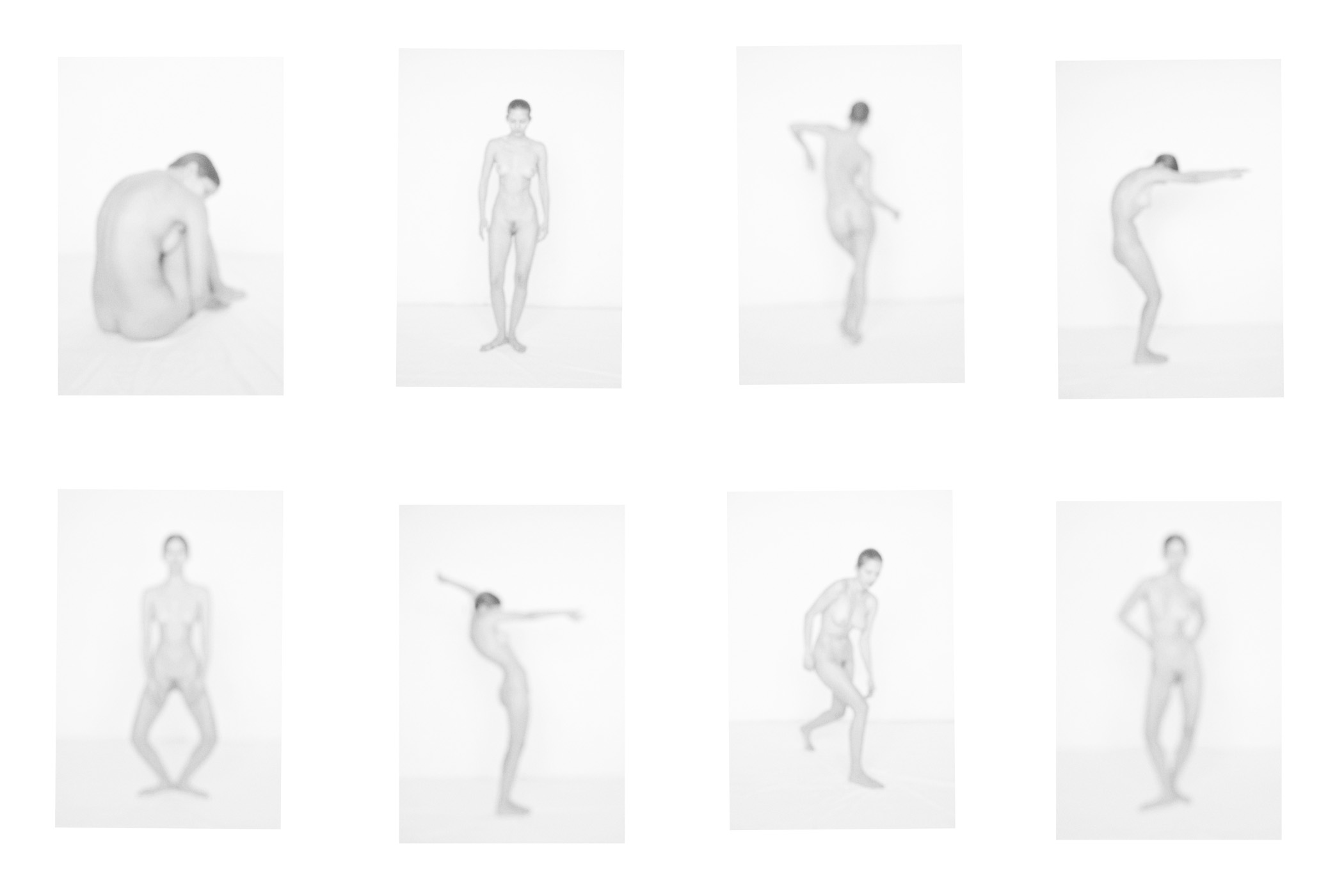
4/16
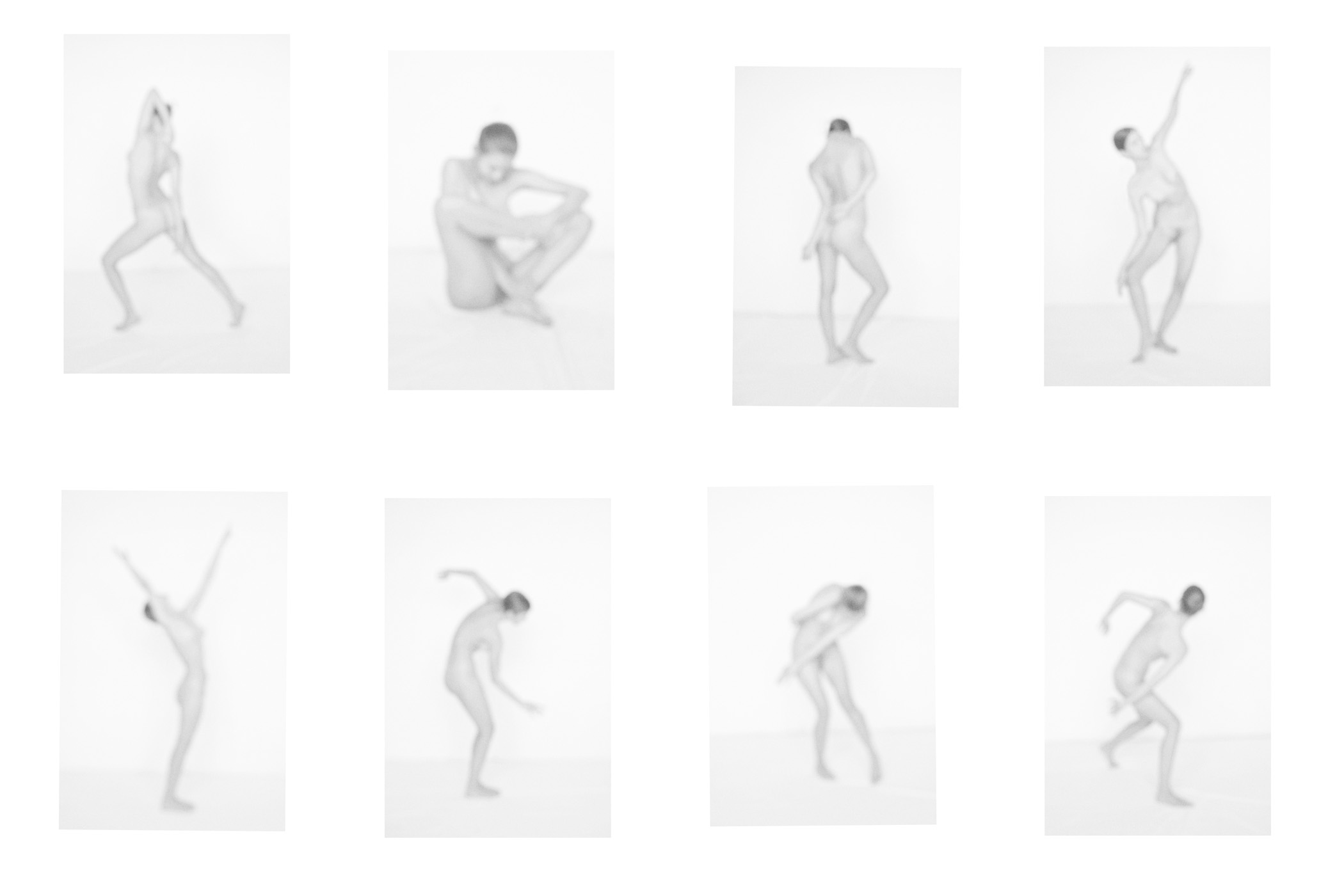
5/16
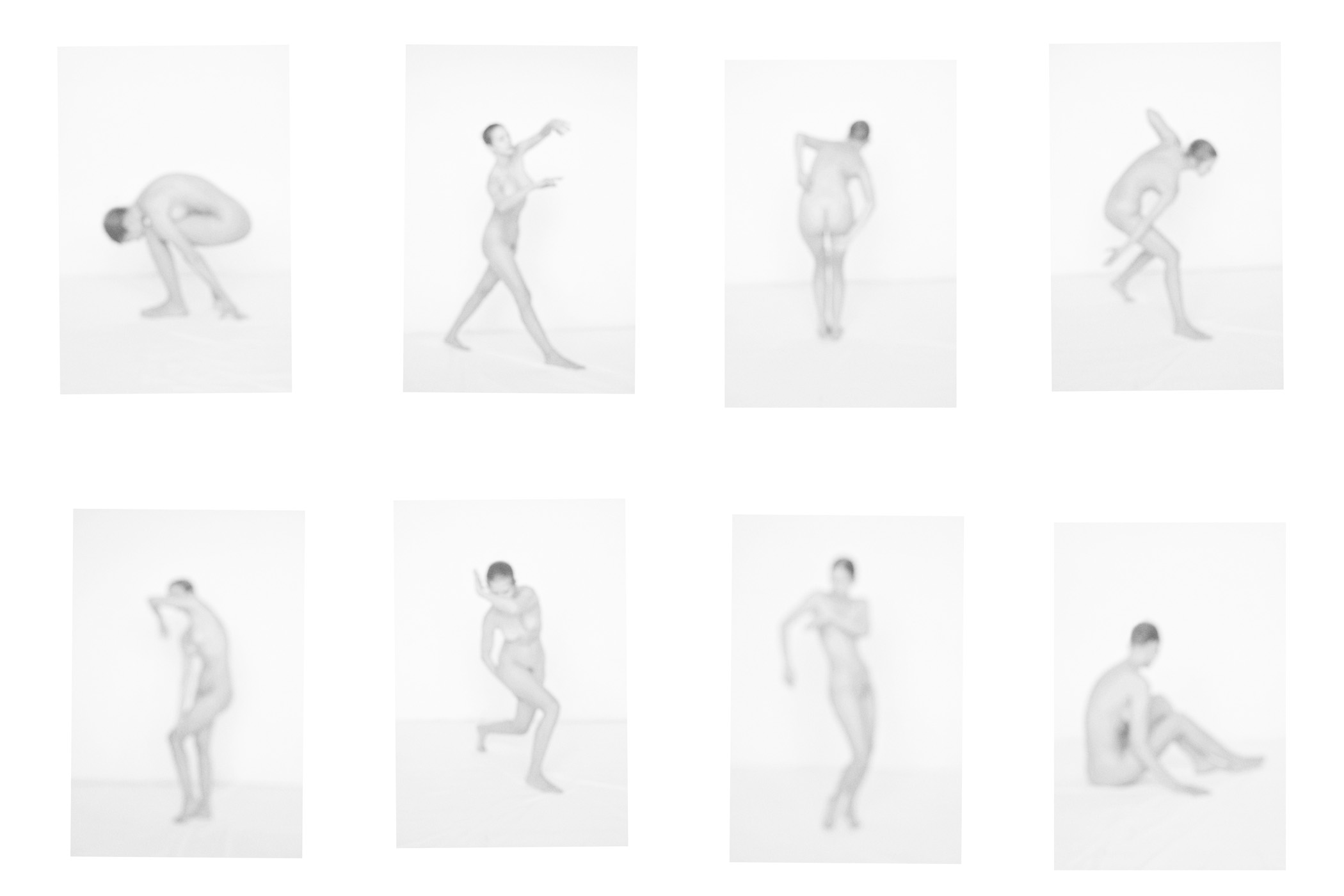
6/16
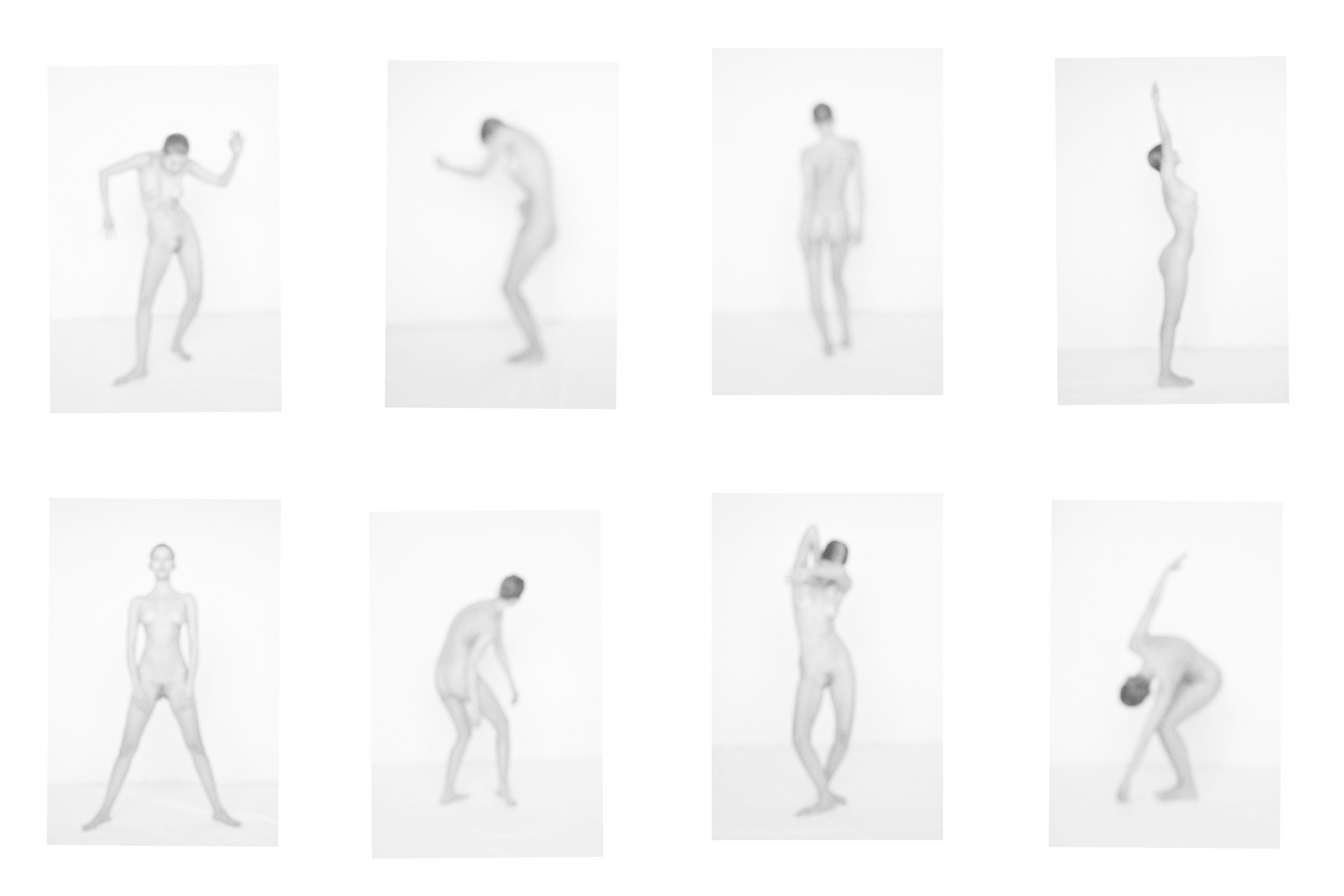
7/16
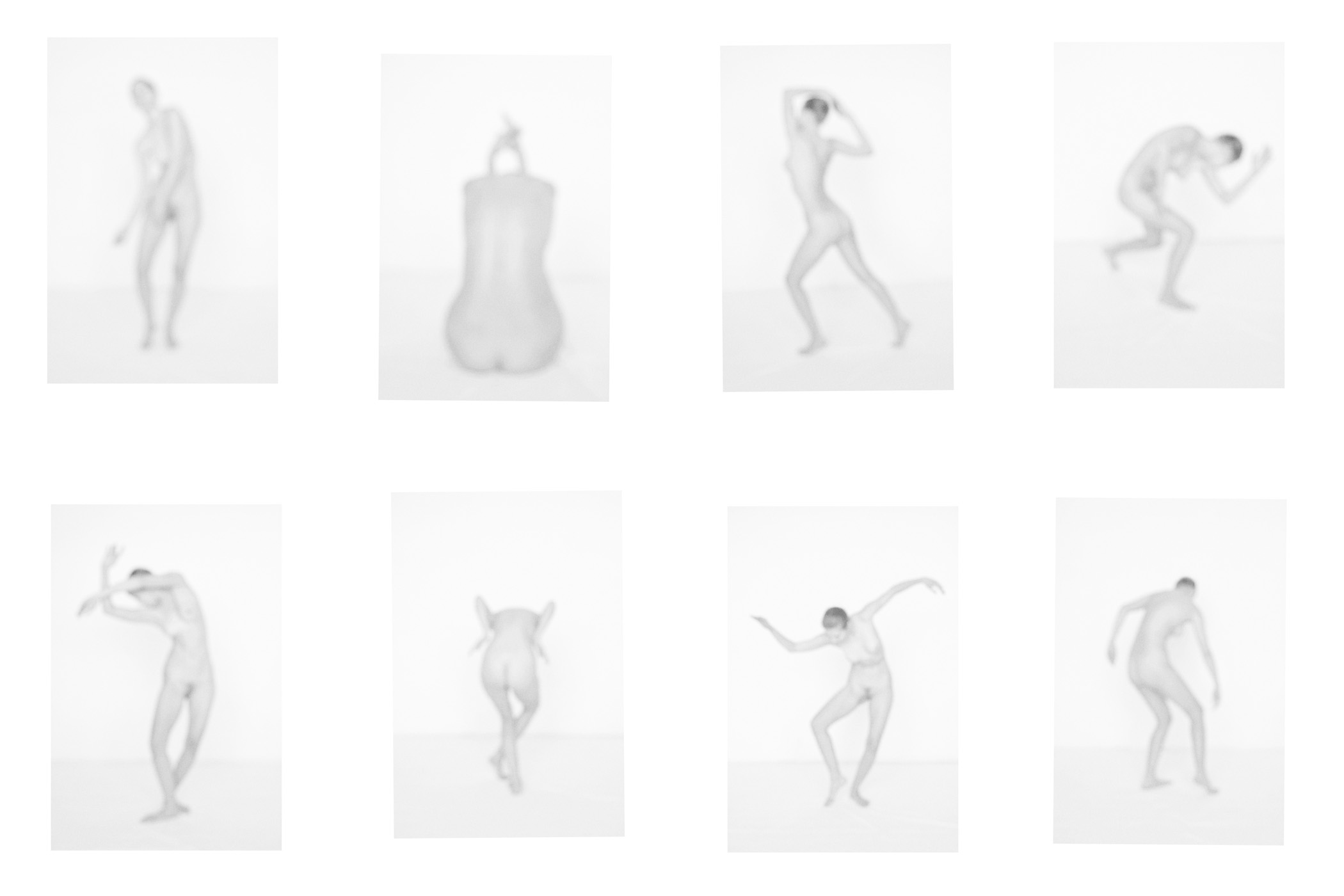
8/16
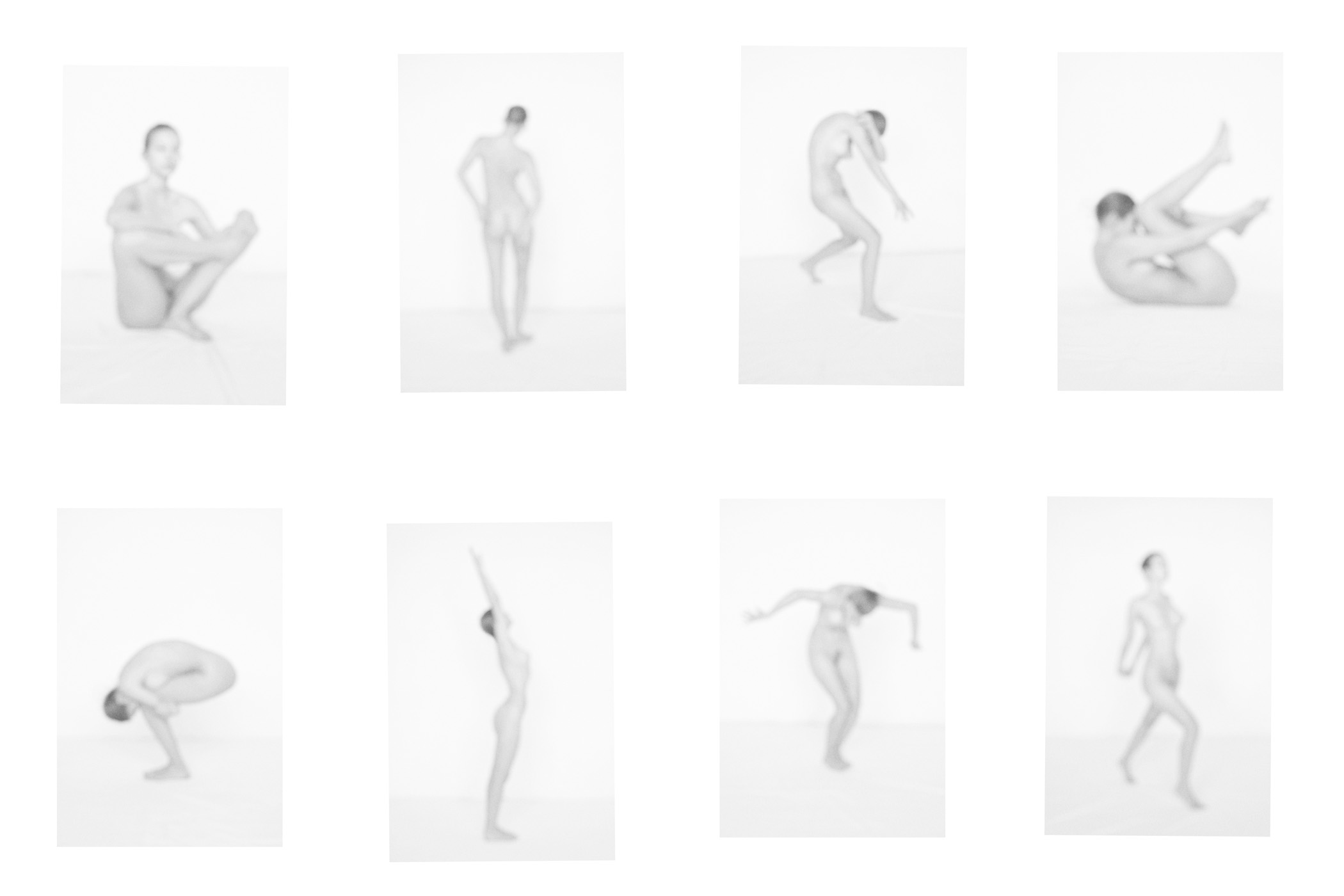
9/16
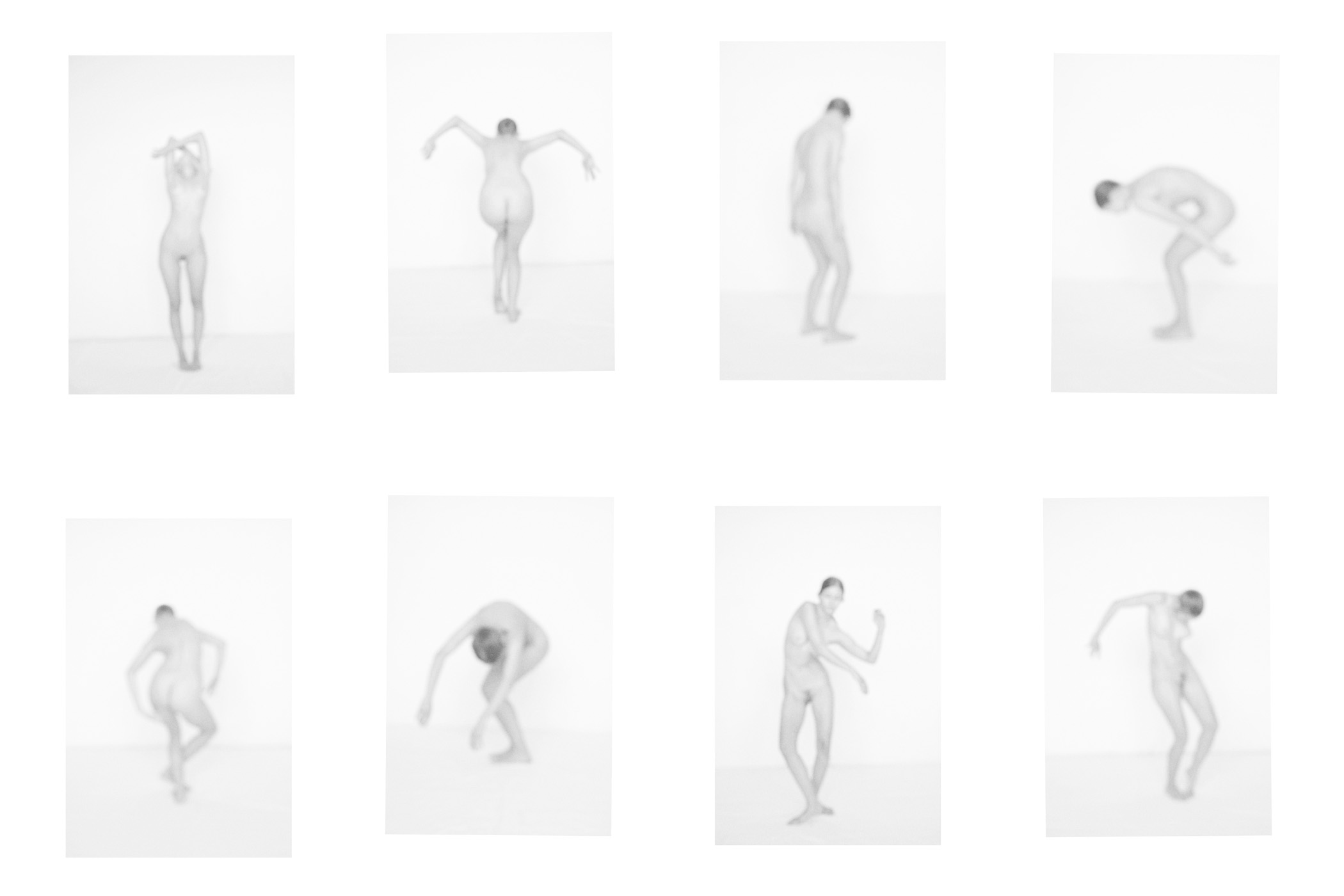
10/16
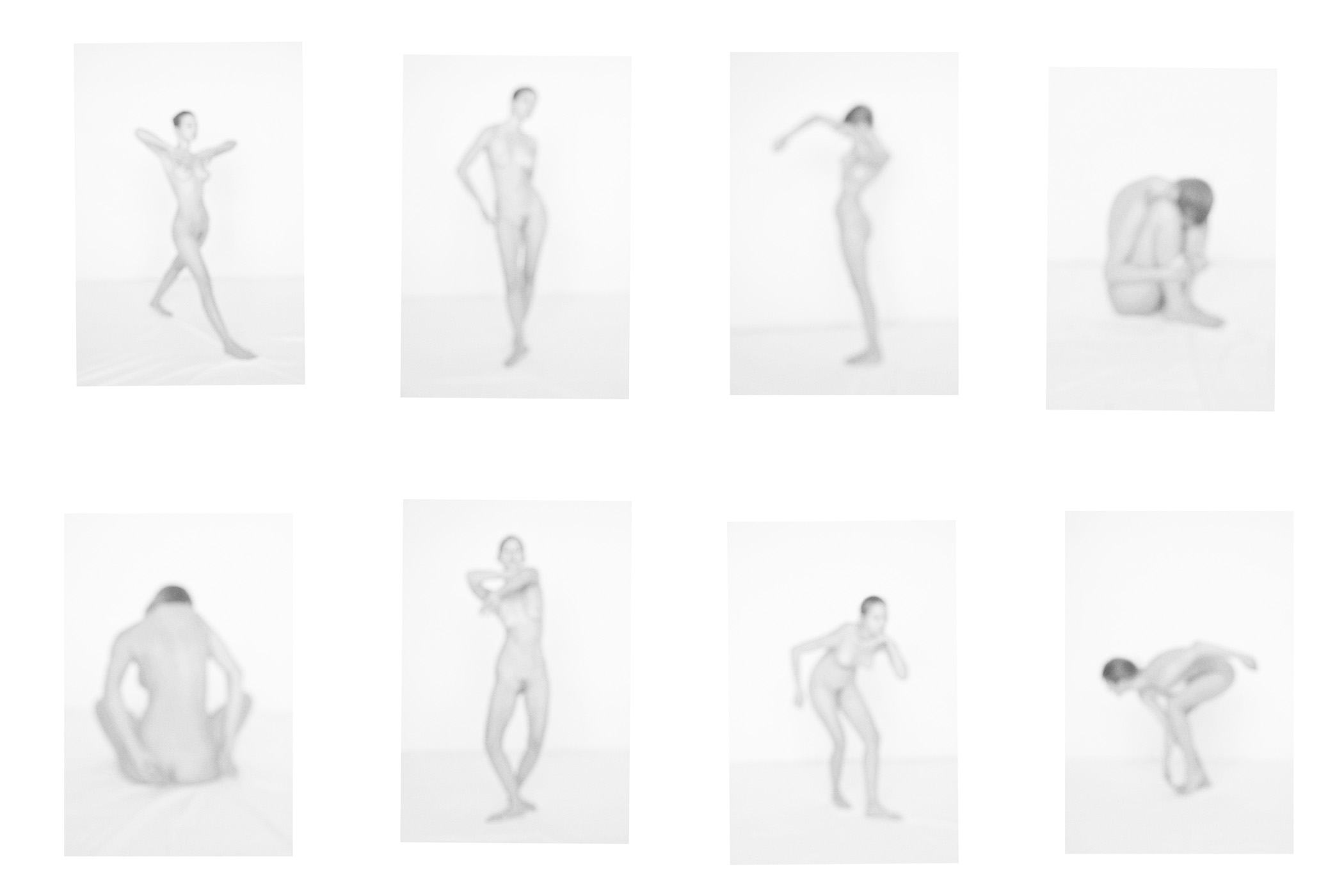
11/16
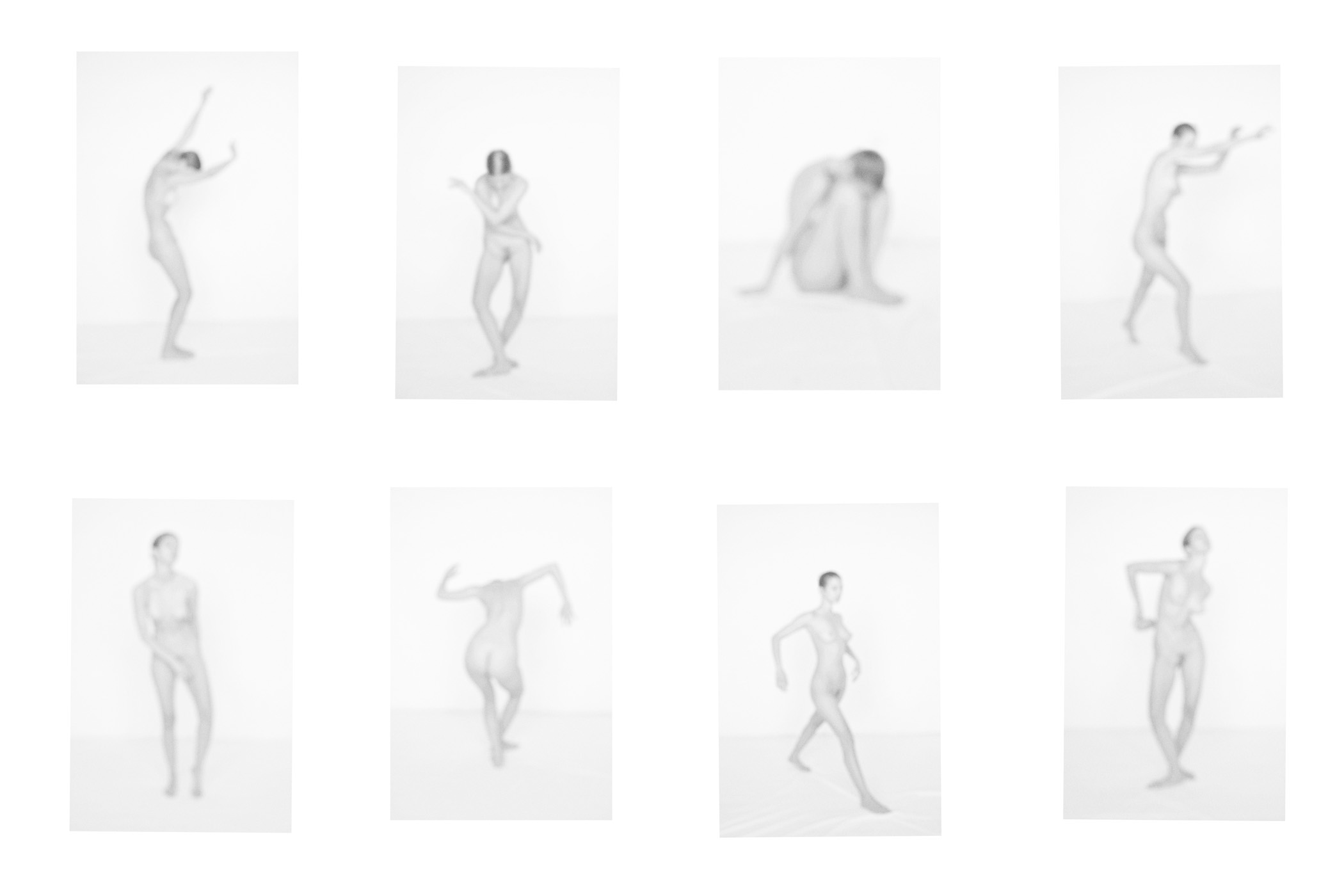
12/16
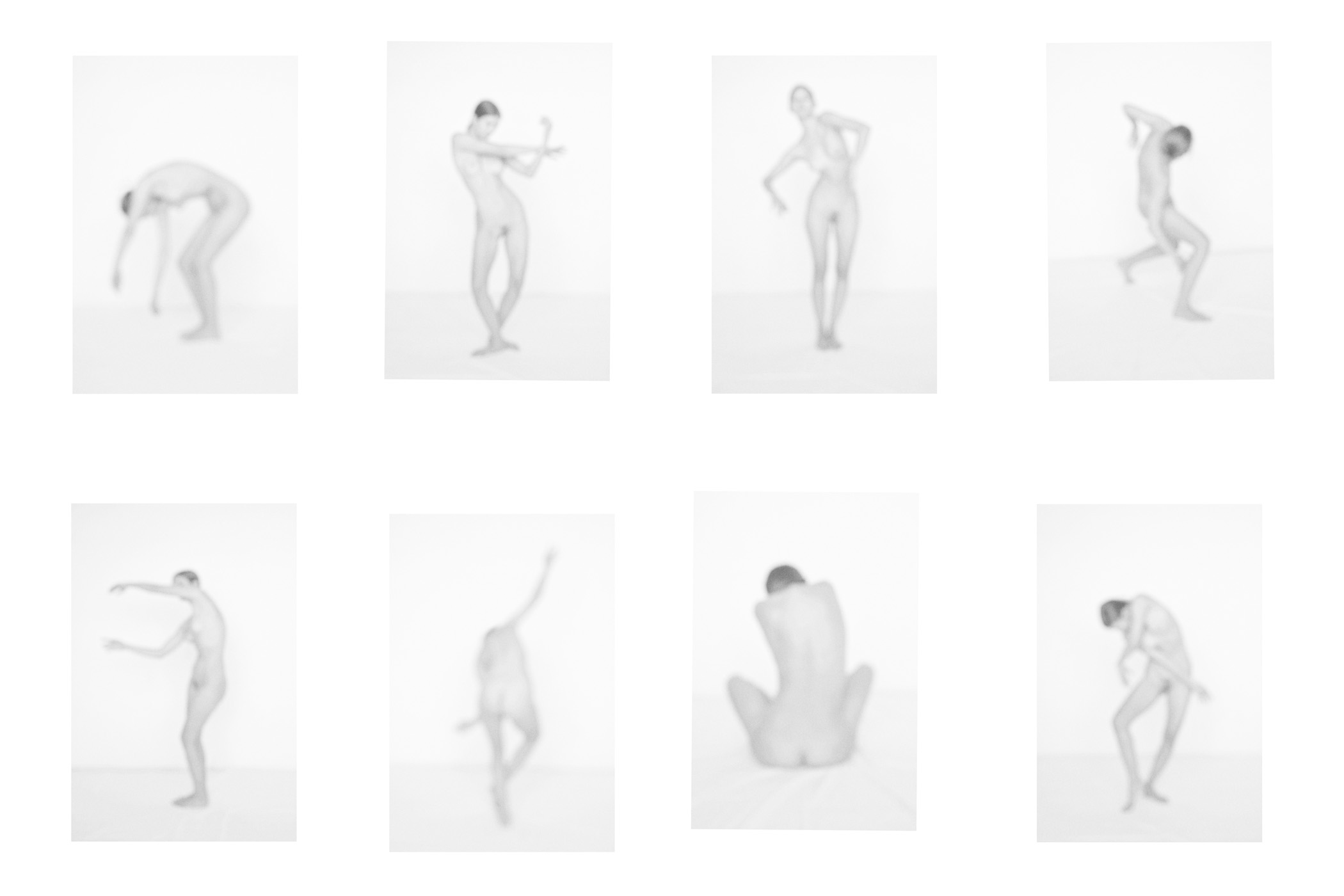
13/16
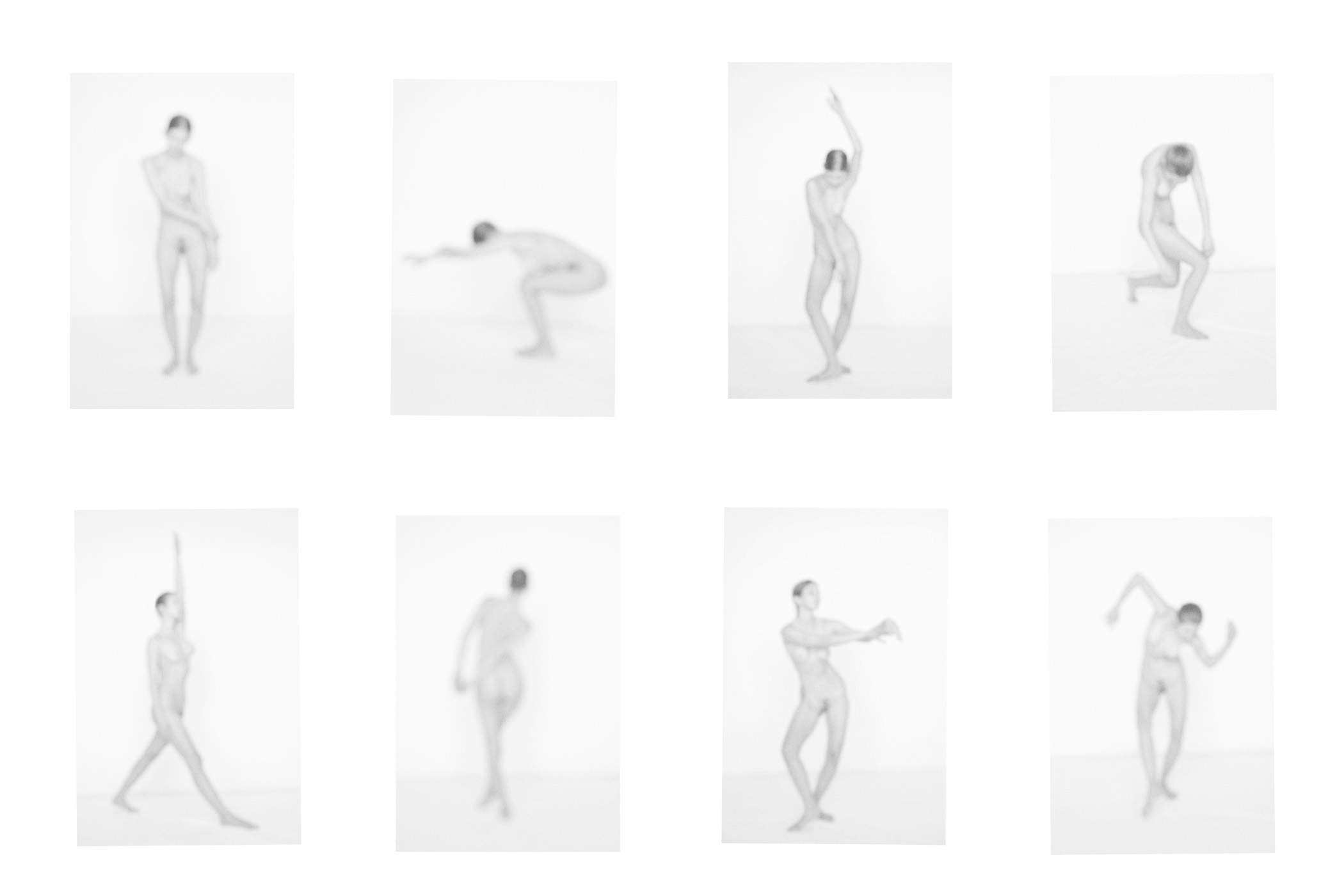
14/16
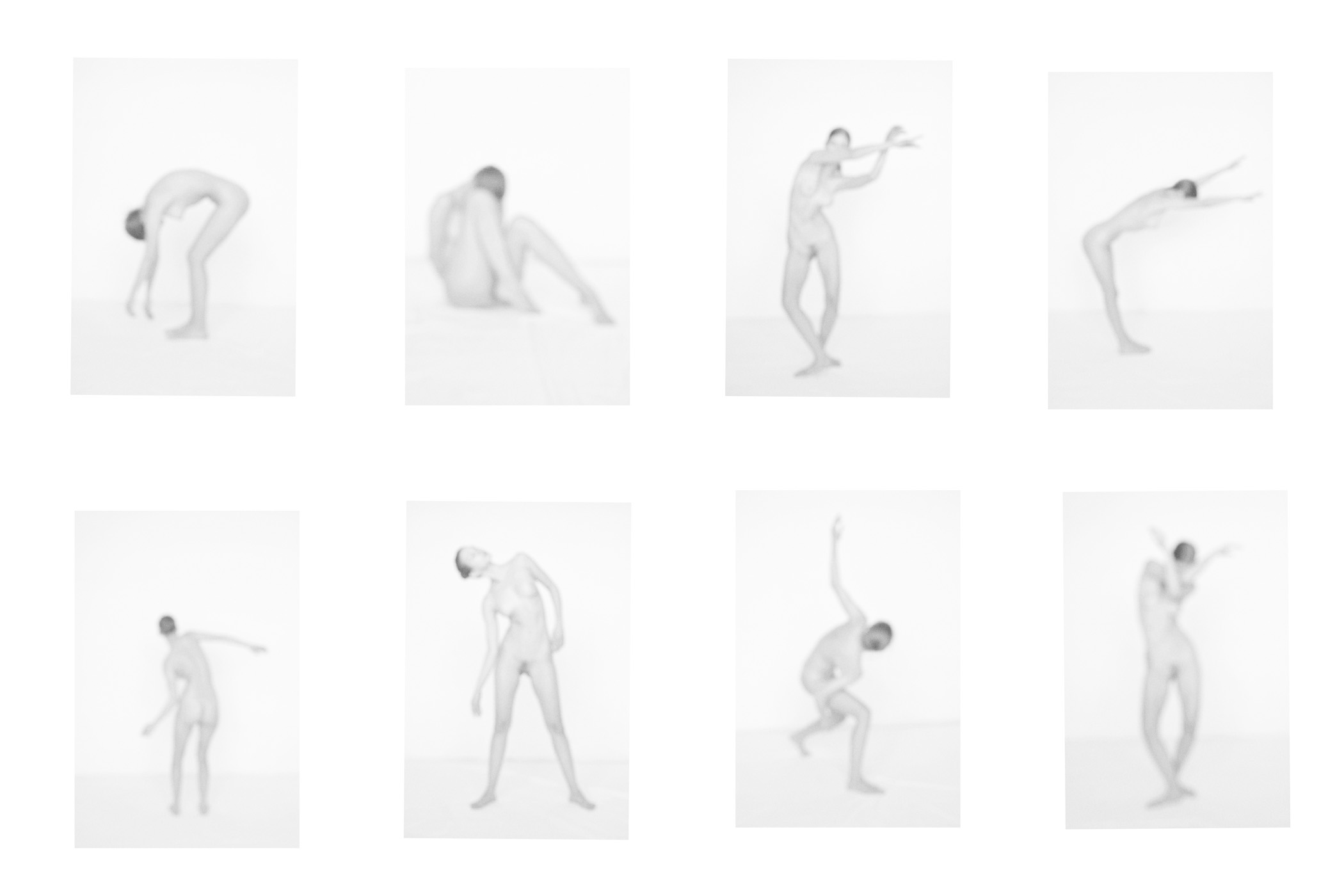
15/16

16/16